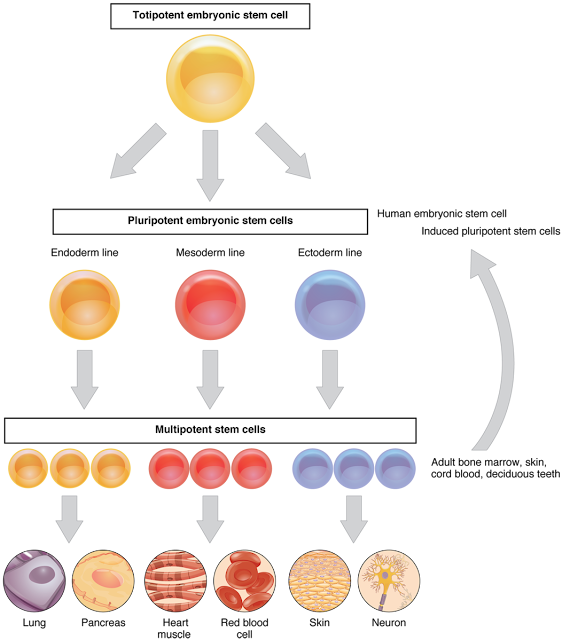What are stem cells?
Stem cells are special human cells that can transform into many different cell types.
- To become a stem cell a cell must possess two properties.
- Self renewal
- Differentiate into more specialized cell
Stem cell self renewal and differentiation to specialized cells
Image credit: Genome Research Limited
- self renewal
- The stem cells gets differentiated into more specialized cells.
Mechanism of cell differentiation
Cell differentiation is the process by which a stem cell becomes a specialized cell type
let us take an example of An Embryonic stem cell.
- An Embryonic stem cell is pluripotent which means it have the potential to form any type of cell, the embryonic stem cell differentiates to form into any of the Germ layer.
There are three types of germ layer -
 |
| Three germ layers, (image: Internet Science Room) |
- Endoderm
- Mesoderm
- Ectoderm
Endoderm is the inner most layer, it forms organs like Lungs, Pancreas, thyroid, stomach and prostate.
Mesoderm is the middle layer, it forms all types of muscles for example heart muscle,skeletal muscle smooth muscle, blood vessels, bone, cartilage, joints, connective tissue, endocrine glands, kidney cortex, uterus, Fallopian tube, testicles and blood cells from the spinal cord and lymphatic tissue.
Ectoderm is the outer most layer, it forms epithelial and neural tissues (spinal cord, peripheral nerves and brain). This includes the skin, linings of the mouth, anus, nostrils, sweat glands, hair and nails, and tooth enamel.
- The germ layer formed is Multipotent which means that it can make many cell types within layer. (which means that if an embryonic stem cell differentiates into ectoderm them it can only further differentiate to form the cells which an Ectoderm layer can form, For example it can form skin, brain but it cannot differentiate to form heart or blood vessel or pancreas, as they are not formed by ectoderm.)
- The Cell experiences many genetic and physical changes along the way as it differentiates the cell becomes more specialized and the number of cell types turn fewer and fewer .
- The cell is gradually losing its potency
- Now the cell becomes Unipotent which means that it can only become one type of cell.





3 Comments
Amazing!!! Very well explained😄
ReplyDeleteBrilliant article
ReplyDelete😂😂😂
Delete